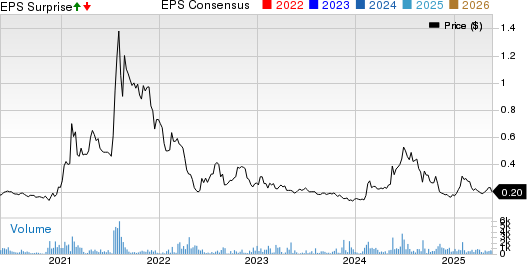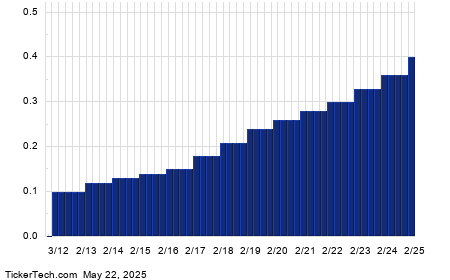July Coffee Prices Drop Sharply Amid Increased Supply and Demand Concerns
July arabica coffee (KCN25) is down -10.30 (-2.78%), while July ICE robusta coffee (RMN25) has decreased by -108 (-2.20%). Today, coffee prices are experiencing a significant decline, with arabica reaching a 5-week low and robusta dropping to a 6-week low. Increased inventories on the Intercontinental Exchange (ICE) are putting downward pressure on these prices. ICE-monitored robusta coffee inventories climbed to an 8-month high of 5,425 lots. Meanwhile, arabica coffee inventories on ICE have risen to a 3-1/2 month high, now standing at 876,019 bags.
Production Estimates Push Prices Lower
Coffee prices have faced pressure over the past three weeks due to expectations of higher production. On Monday, the USDA’s Foreign Agriculture Service (FAS) projected that Brazil’s coffee production for the 2025/26 season will increase by 0.5% year over year to 65 million bags. Simultaneously, Vietnam’s output for the same period is expected to rise by 6.9% year over year to 31 million bags. Notably, Brazil is the largest producer of arabica coffee, while Vietnam leads in robusta.
Previously, on May 9, the USDA had forecast a 5.1% year-over-year increase in Honduras’ coffee production, reaching 5.8 million bags. Additionally, consulting firm Safras & Mercado raised its Brazil production estimate for 2025/26 to 65.51 million bags, up from 62.45 million. Conab, Brazil’s crop forecasting agency, also increased its estimate from 51.81 million bags to 55.7 million bags.
Weak Demand Raises Concerns
Bearish signals have emerged regarding coffee demand. Major global importers like Starbucks, Hershey, and Mondelez International recently indicated that a baseline 10% tariff on U.S. imports could raise prices and further hurt sales volumes.
Moreover, the indication of larger supplies from Brazil is intensifying price pressure. Safras Mercado reported that coffee sales in Brazil for the 2024/25 season were 97% completed as of May 13, ahead of the 94% completion reported at the same time last year.
Weather and Export Concerns Provide Some Support
Weather-related issues in Brazil could limit further price declines. Somar Meteorologia reported that the Minas Gerais region, Brazil’s largest arabica-growing area, received only 2.5 mm of rain during the week ending May 17, which is just 12% of the historical average.
Export data indicates a tightening market. Last Monday, Cecafe announced that Brazil’s green coffee exports for April fell by 28% year over year to 3.05 million bags. Additionally, January to April exports dropped 15.5% year over year to 13.186 million bags.
Robusta Coffee Production Declines
Robusta prices have some support from reduced production in Vietnam. Due to drought conditions, Vietnam’s coffee production for the 2023/24 crop year has decreased by 20% to 1.472 million metric tons, marking the smallest crop in four years. The country’s General Statistics Office also reported a 17.1% year-over-year decline in coffee exports for 2024, down to 1.35 million metric tons. Data from Vietnam’s National Statistics Office indicates that coffee exports for January to April 2025 fell by 9.8% year over year to 663,000 metric tons. On March 12, the Vietnam Coffee and Cocoa Association adjusted its production estimate for 2024/25 down to 26.5 million bags, from an earlier figure of 28 million bags. In contrast, Rabobank anticipates Brazil’s 2025/26 robusta coffee output to rise by 7.3% year over year to a record 24.7 million bags.
Mixed Signals from Recent USDA Reports
The USDA’s biannual report released on December 18 provided mixed signals for coffee prices. The projection indicated a global coffee output increase of 4.0% year over year to 174.855 million bags for 2024/25. This includes a 1.5% increase in arabica production and a more significant 7.5% increase in robusta production. However, forecasts also noted a decrease in ending stocks, projected to fall by 6.6% to a 25-year low of 20.867 million bags.
For the 2025/26 marketing year, Volcafe revised its estimate for Brazil’s arabica production down to 34.4 million bags, a reduction of about 11 million bags from a projection made in September. This adjustment is largely attributed to the drought conditions in Brazil. Volcafe now expects a global arabica deficit of 8.5 million bags in 2025/26, which is wider than prior deficits.
On the date of publication,
Rich Asplund
did not have (either directly or indirectly) positions in any of the securities mentioned in this article. All information and data in this article is solely for informational purposes. For more information please view the Barchart Disclosure Policy.
More news from Barchart
The views and opinions expressed herein are the views and opinions of the author and do not necessarily reflect those of Nasdaq, Inc.


